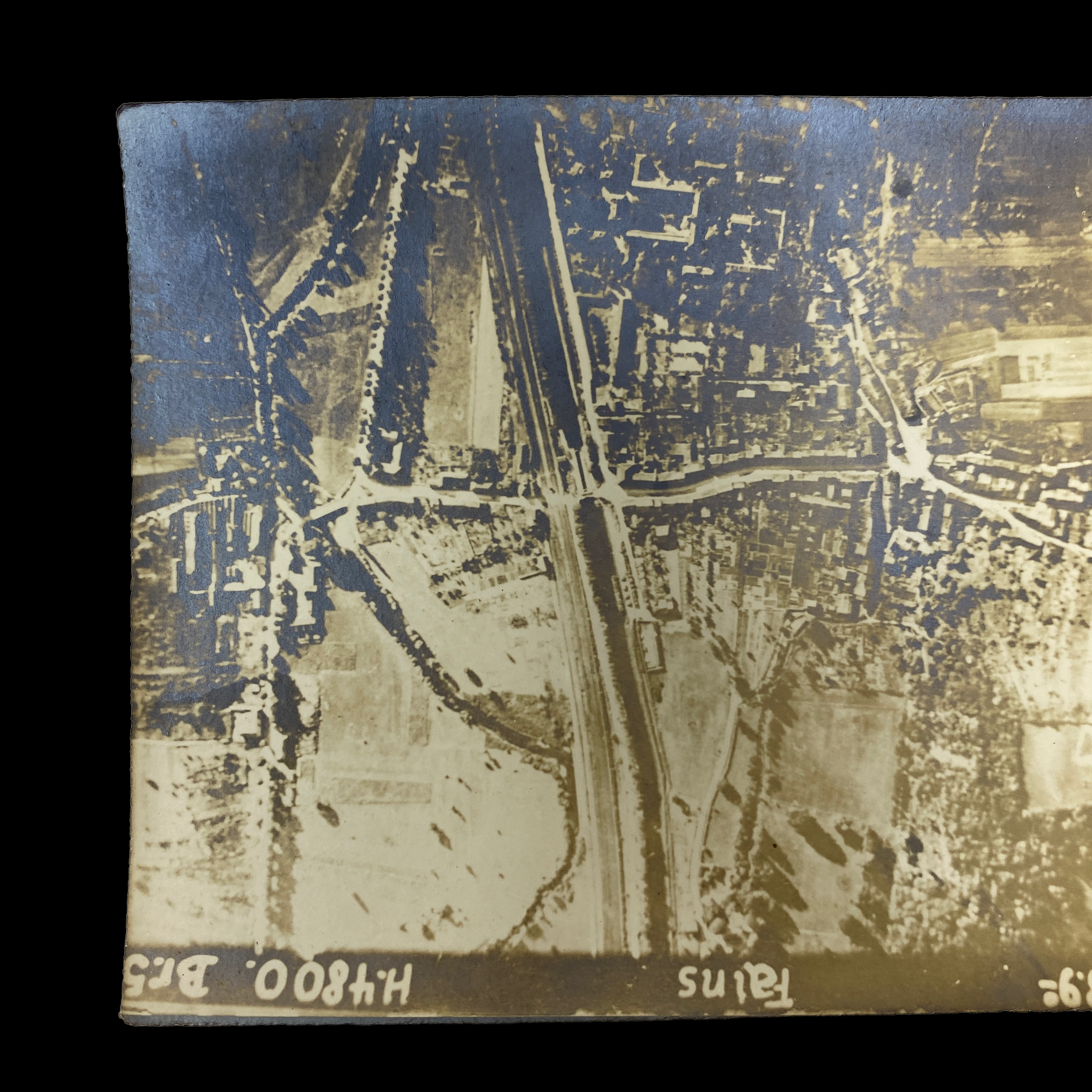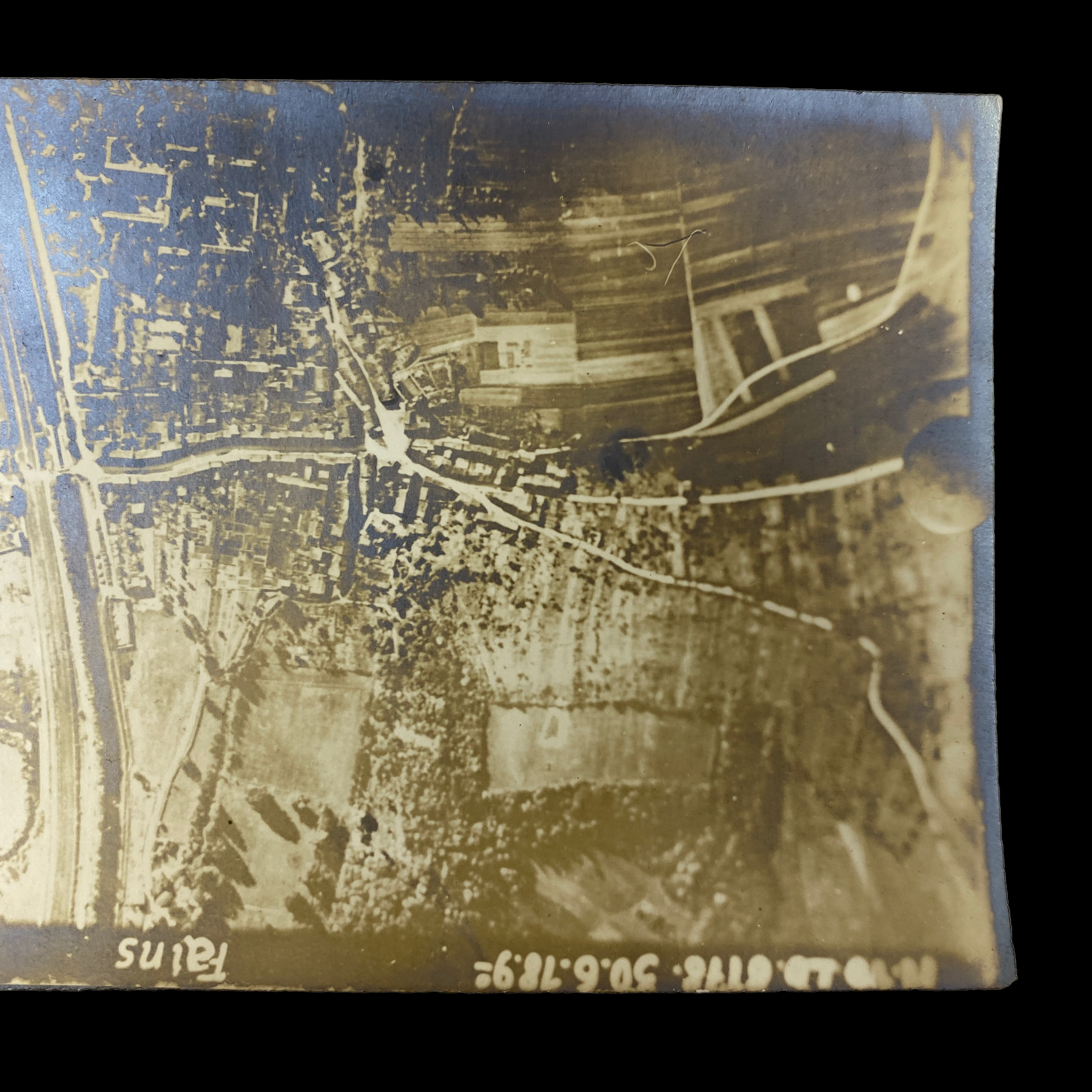RARE! WWI Original German Aerial Reconnaissance Mission Aero Squadron Photograph*








RARE! WWI Original German Aerial Reconnaissance Mission Aero Squadron Photograph*
Comes with hand-signed C.O.A.
This is an original World War I German frontline trenches aerial photograph. The photograph was taken during the war, providing a unique and rare glimpse into the conditions of the trenches. This is a one-of-a-kind piece of history that would make a great addition to any collection.
During World War I, aerial photography played a crucial role in military strategy. By using airplanes to take photographs of enemy positions, military commanders were able to gain a better understanding of the battlefield and plan their attacks more effectively. This particular photograph was taken by a WWI German reconnaissance plane and shows the trenches that were used on the front lines.
The trenches in the photograph are a stark reminder of the brutal conditions of World War I. These narrow, muddy ditches were the soldiers' homes for months on end, and were often filled with water and plagued by disease. Despite the hardships, the soldiers in these trenches fought bravely for their country.
World War I marked the first widespread use of airplanes in warfare. While initially used primarily for reconnaissance purposes, aircraft quickly proved to be invaluable assets in a variety of roles, including fighter planes, bombers, and even early prototypes of aircraft carriers. German planes, in particular, played a significant role in the war and were used extensively for aerial reconnaissance.
At the start of the war, the German Empire had a strong aerial advantage over its adversaries. Its planes were among the most advanced in the world, and its pilots were highly trained and skilled. The German Army, in particular, made extensive use of planes for reconnaissance, using them to gather intelligence on enemy positions and movements.
One of the most important German planes used for aerial reconnaissance during WWI was the Fokker Eindecker. This monoplane was the first fighter plane in the world to be equipped with a synchronized machine gun, allowing the pilot to fire directly through the propeller without damaging the blades. This gave the Eindecker a significant advantage over its enemies and allowed it to dominate the skies during the early years of the war.
Another key German plane used for reconnaissance was the Albatros C.III. This biplane was larger and slower than the Eindecker but was able to carry a greater load, making it well-suited for long-range reconnaissance missions. It was also equipped with a camera, allowing pilots to take photographs of enemy positions and movements.
German planes also played a significant role in the development of aerial warfare tactics. One of the most important innovations was the use of fighter planes to protect bombers. This allowed German planes to carry out effective bombing runs against enemy positions without being vulnerable to attack.
Despite the initial success of German planes in WWI, their advantage gradually eroded as the war went on. Other countries, such as Britain and France, began to develop their own advanced aircraft, and the introduction of new technology, such as the use of metal in plane construction, made German planes increasingly vulnerable. By the end of the war, German planes were no longer dominant in the skies, and the country's aerial advantage had been largely nullified.
This photograph is an important piece of history and would make a great addition to any collection of World War I memorabilia. It is a reminder of the sacrifices made by the soldiers who fought in the war and the harsh conditions they faced on the front lines.